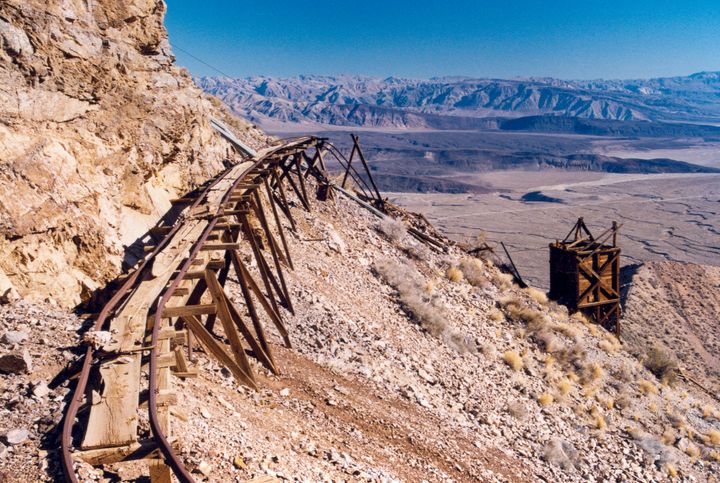In the summer of 2014, at the end of an exploration trip in the White Mountains of eastern California, we decided to take a little side trip to a cabin I had heard about. From what scarce history I could find on the place, there didn’t seem to be any mining activity in the area to justify a cabin at this location, so I was curious why it was there.
Our hike began as we parked at the top of the steep and rugged cut in the side of the mountain that is Silver Canyon. The old road down to the cabin is closed these days. So we packed a small daypack and began to hike down. The views here of Owens Valley, 6,000 ft below, were amazing.
The road entered into an open bristlecone pine forest. These pines are some of the oldest trees in the world, and many are thousands of years old. Even the rocks here are ancient (by rock standards). The geologic layers here are of the Poleta and Campito formations. These Precambrian limestone, shale, and sandstone beds formed in shallow seas beds over 500 million years ago.
The road continued downhill through the forest, and before too long, we came to an old log bridge. In my many travels to the White Mountains, I have never seen a bridge like this one. It was simple in design but very well built. (Historic structures like these are rare and need to be preserved, so please tread lightly.)

Beyond the bridge, the road narrows into a single track, and soon enough, we arrived at an old log cabin resting on the high shoulder of a mountain ridge. The craftsmanship of the cabin immediately shows. The bristlecone logs were cut with great care and notched together with fine precision. The cabin has survived well, except that half of the roof has been blown off from countless fierce Sierra Nevada winter storms.
We took our time at the cabin and had a snack. Surrounded by bristlecone pines and mountain mahogany, this is a great place to rest and take a look at the vast canyon below.

I was suspicious that this wagon road was once a toll road. Further research from a friend confirmed that belief. This was once called the Goldfield Toll Road (Bishop to Goldfield). It and the first electric power lines in the area were constructed around 1905. Goldfield was a booming mining town at the time, but there were few ways to reach it. Business and mining operations paid for the wagon road and power lines to be built. Tolls ceased being charged in 1917 when the monies collected were enough to pay back the Goldfield interests.



